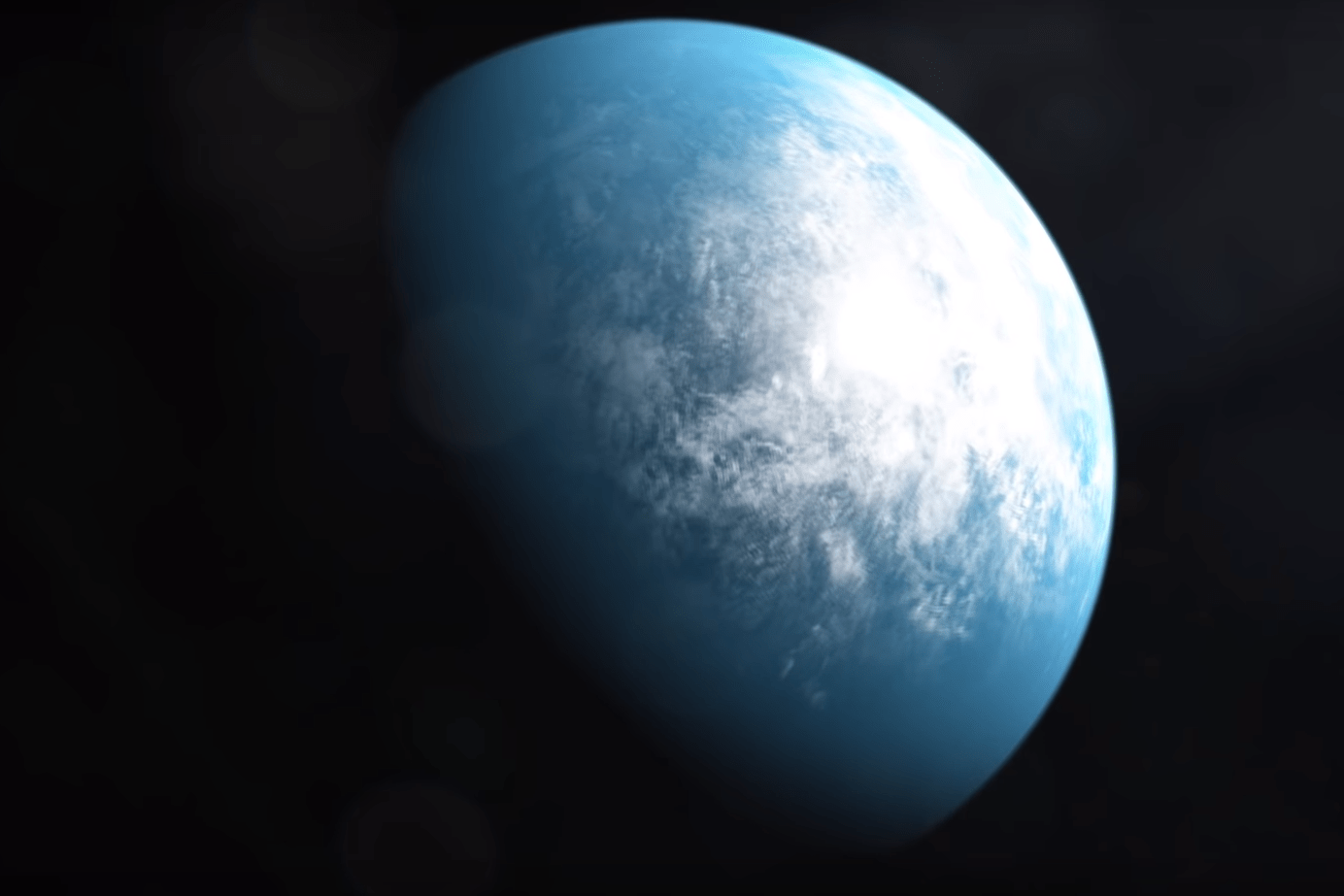At times, it seems like there’s an indundation of announcements featuring discoveries of “Earth-like” planets. And while those announcements are exciting, and scientifically noteworthy, there’s always a little question picking away at them: exactly how Earth-like are they, really?
After all, Earth is defined by its relationship with the Sun.
There’s no strict definition of the term “Earth-like.” It just means a world that’s similar in some respects.
But most of the time when the term Earth-like is used to describe an exoplanet, it refers to the size, and to the potential for liquid water to persist on the surface. The problem is, most worlds that are described as Earth-like—most exoplanets in fact—are orbiting red dwarf stars.
“The full picture of habitability, however, involves a look at the qualities of the star too.”
Dr. René Heller, Lead Author, Max Planck Institute for Solar System Research.
Red dwarf stars are very different from our Sun. They’re small, dim, and cool. They’re the smallest and coolest stars on the main sequence. The Sun, on the other hand, is large, luminous, and has a surface temperature of about 5700 K (5420 C) compared to a red dwarf’s surface temperature of about 2,000 K (1730 C).
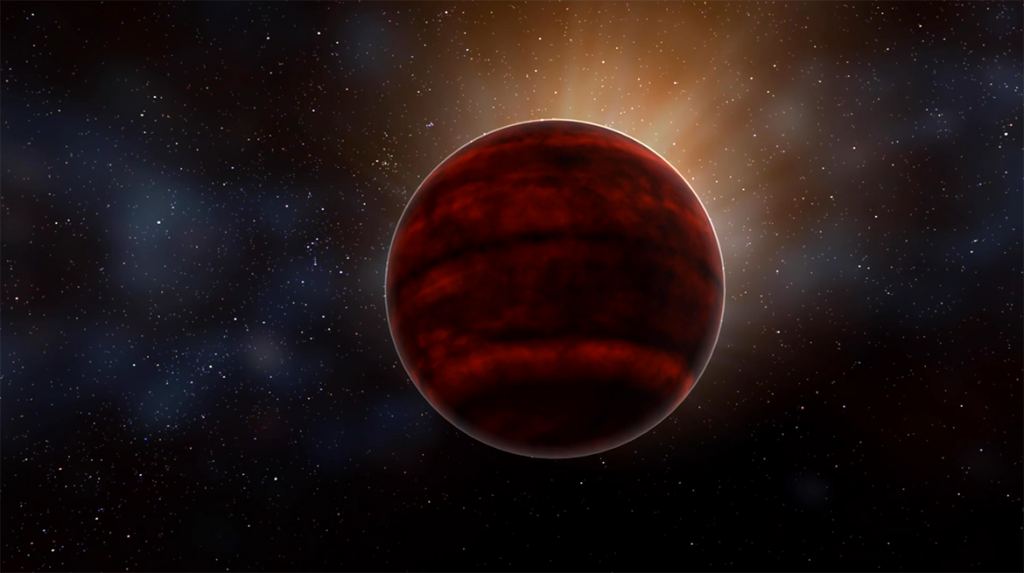
So if an exoplanet described as Earth-like is orbiting a red dwarf star, how Earth-like can it really be? It’s more accurate to describe planet-star pairs as Earth-Sun-like, since the relationship between a planet and its star determines to much about the planet.
The author of a new study holds that view.
The study is titled “Transit least-squares survey. III. A 1.9 R? transit candidate in the habitable zone of Kepler-160 and a nontransiting planet characterized by transit-timing variations.” The lead author is Dr. René Heller from the Max Planck Institute for Solar System Research (MPS). The study is published in the journal Astronomy and Astrophysics.
When it comes to habitabiliy, and whether or not a planet is Earth-like, Heller says in a press release that “The full picture of habitability, however, involves a look at the qualities of the star too.”
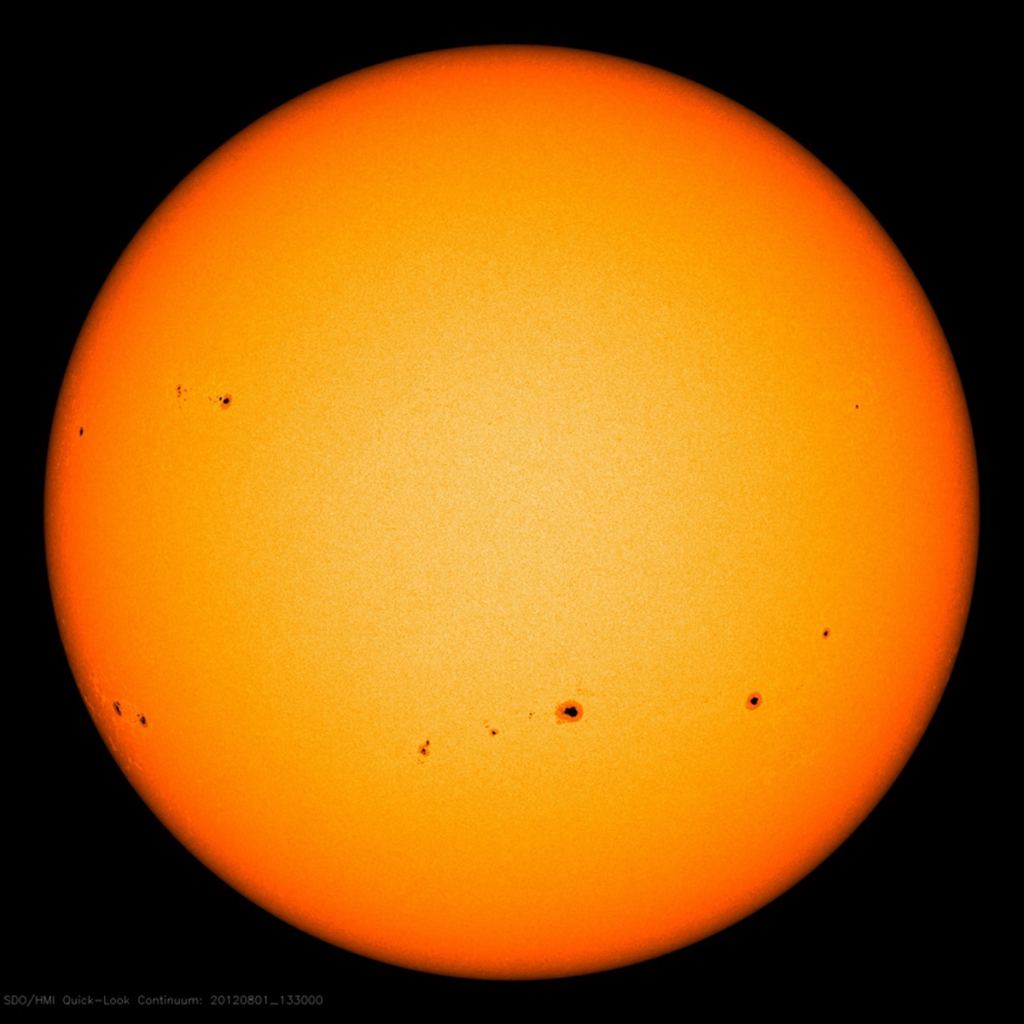
The new paper revolves around Kepler-160, a main-sequence star very similar to the Sun. Kepler-160 is about 90% the mass of the Sun, about 1.12 the radius of the Sun, and has a surface temperature of about 5470 K (5200 C). That’s very similar to the Sun’s surface temperature, which is about 5770 K (5500 C).
Kepler 160 is about 3140 light years away, in the constellation Lyra.
This distant star also has two confirmed planets orbiting it, and astronomers have known about them for years. Those planets are named Kepler-160 b and Kepler-160 c, following exoplanet naming conventions. Both of those planets are considerably larger than Earth, and they orbit closely to the star. They’re far too hot for life as we know it to survive there.
But something’s happening with Kepler-160 c (K160c). It’s wobbling, and something small is tugging on it to cause these tiny orbital variations. Was there something hidden in the original Kepler data? Another small planet in orbit around K160?
That’s where Heller and his colleagues come in. They had already been successful combing through existing Kepler data and finding planets that were missed. In 2019, Keller and his colleagues, Michael Hippke and Kai Rodenbeck, published a paper presenting the discovery of 17 new exoplanets hidden in the original Kepler data. And they were all in solar systems where planets had already been discovered.
Now it looks like they’ve done it again.
The Kepler spacecraft was really good at one thing: finding the dips in starlight in distant solar systems, caused by a planet moving in front of it, from our point of view. That’s called a transit. But there’s a problem with that method.
There’s an inherent selection bias in favour of large planets, which cause a more pronounced dip in starlight when they transit, in comparision to smaller planets. As a result, most of the exoplanets discovered by Kepler are large. They’re Neptune-sized gas planets, about as different from Earth as you can get.
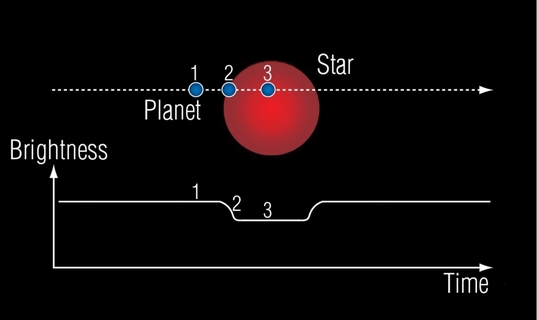
In this new work, Keller and Hippke took a different approach. Rather than look for the step-like transits, where the starlight is there, then blocked, then returns again, they did something different. They developed a more nuanced physical model of variations in stellar dimming. They call it the Transit Least-Squares (TLS) algorithm. That algorithm is optimized to find smaller planets, and helps mitigate Kepler’s in-built selection bias.
“Our improvement is particularly important in the search for small, Earth-sized planets,” Heller explains. “The planetary signal is so faint that it’s almost entirely hidden in the noise of the data. Our new search mask is slightly better in separating a true exoplanetary signal from the noise in the critical cases,” Heller adds.
In this case, the team found not one, but two new candidate exoplanets in the K-160 system. That makes a total of four planets.
“Our analysis suggests that Kepler-160 is orbited not by two but by a total of four planets,” Heller said.
One of them, K160d, is the one that was tugging on K160c. But it’s the second one that is garnering interest. The second new planet is still unconfirmed, and hasn’t shown any transits in front of its star. So it bears the name KOI-456.04, which stands for Kepler Object of Interest 456.04.
KOI-456.04 has a radius of 1.9 Earth radii, so it’s substantially larger than Earth. But its orbital period is 378 days, very similar to Earth’s. And the star it orbits is very similar to the Sun, so the amount of insolation it receives is very similar to Earth’s. Not only that, but unlike all the exoplanets that orbit red dwarfs, and hence receive their insolation as infrared energy, KOI-456.04 receives its energy in visible light. Just like Earth.
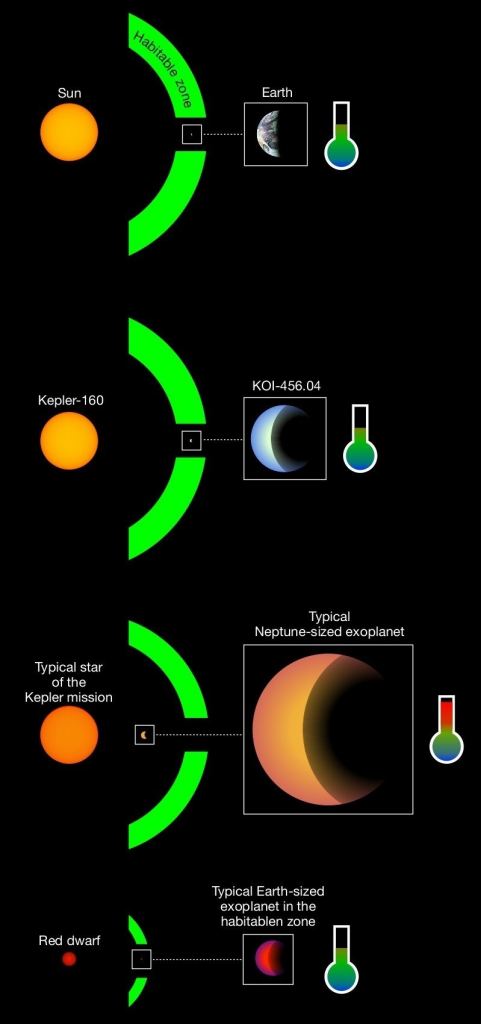
It receives about 93% of the energy that Earth does. So if it has a relatively inert atmosphere with a mild greenhouse effect, its surface temperature woud be about +5 degrees Celsius. And even though that’s about 10 C lower than Earth’s average surface temperature, it’s still warm enough for liquid water to persist.
The big picture is that this newly-discovered planet is in a very similar relationship with its star as the Earth is with the Sun. It sits in its star’s habitable zone in a way very similar to Earth. So in that sense, it could be the most Earth-like exoplanet we’ve discovered yet, even if it is almost two times the radius that Earth is.
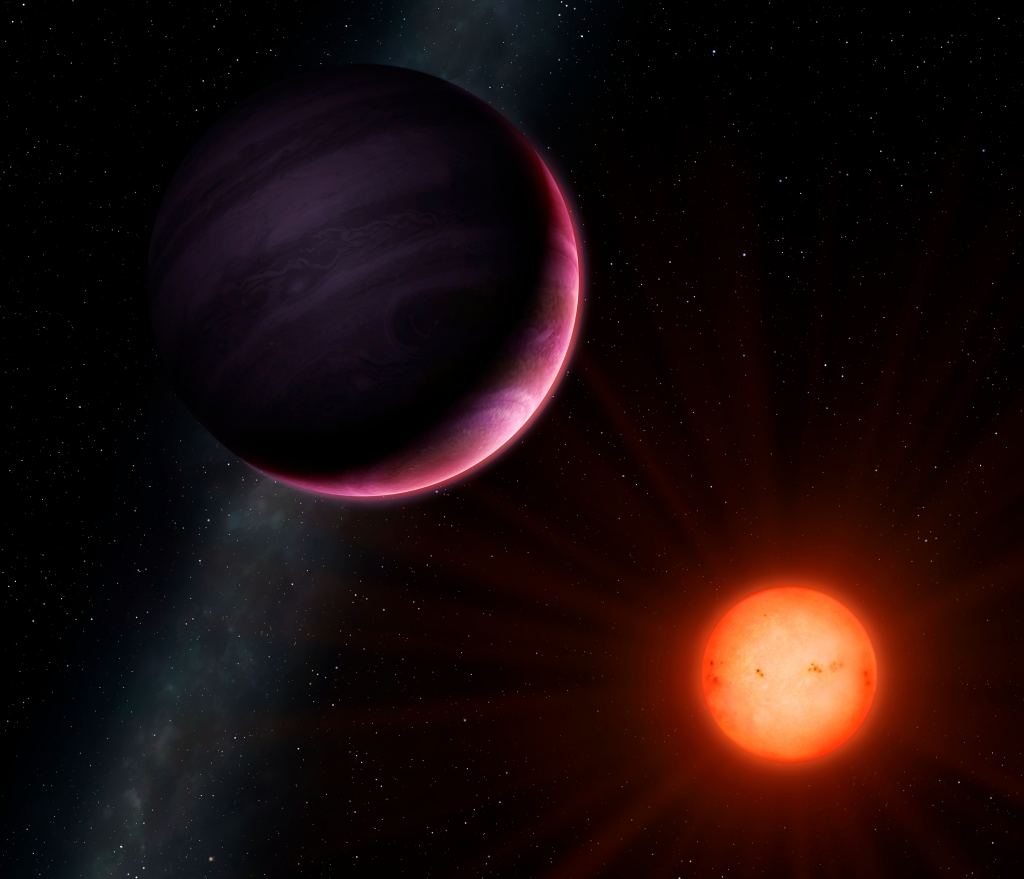
“KOI-456.01 is relatively large compared to many other planets that are considered potentially habitable. But it’s the combination of this less-than-double the size of the Earth planet and its solar type host star that make it so special and familiar,” Heller clarifies.
Of course, KOI-456.04 is still just a candidate exoplanet, whose existence hasn’t been confirmed yet. It could just be a measurement error, or even a statistical fluke. Heller and his colleagues say that as it stands now, there’s about an 85% chance that it is indeed a planet. To be formally considered as a planet, that number needs to be 99%. It’ll require further observations with a powerful ground-based telescope to confirm it, or better yet, observations with upcoming space telescopes.
This discovery poses a question for the astronomy community. When should the moniker “Earth-like” be used to describe a planet? Especially now that this truly Earth-like planet has been discovered, and considering that as we get better at detecting Earth-sized exoplanets, there’ll likely be dozens, hundreds, or even thousands of them in a few years time.
The type of star has to come into play when we categorize planets as Earth-like. Most exoplanets are orbiting red dwarf stars, the most common type of star in the Milky Way. They’re dim, cool, and prone to violent flaring outbursts. These outbursts would torment any planet too close, and make life highly unlikely. Can planets orbiting these stars really be considered Earth-like?
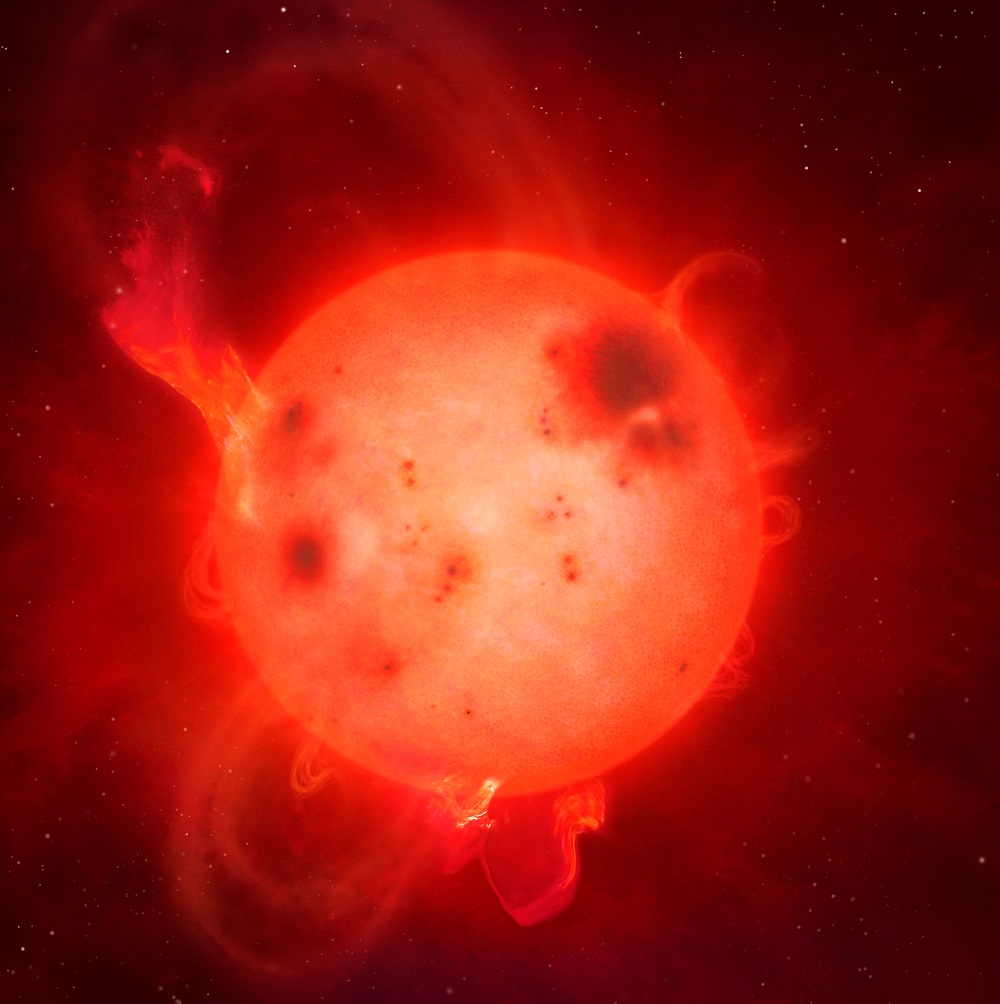
There is some context for using the term Earth-like to describe exoplanets. In the last decade and a half, we’ve discovered over 4,000 confirmed exoplanets, and we now know there are a vast number of them waiting to be discovered in the Milky Way. And the majority of these 4,000 are gas giants. They’re Neptune-sized planets, about 4 times as massive as Earth.
So when astronomers find a planet that is smallish, likely rocky, and recieves an amount of energy from its star that’s similar to what the Earth receives from its Sun, it often gets tagged with the “Earth-like” label. There’s nothing disingenuous there.
But most people would likely agree that any planet that was repeatedly lashed with violent flarings is definitely not Earth-like. Earth is only Earth because of its benevolent relationship with the Sun. Should the term Earth-like be restricted to planets similar to Earth, that also orbit stars similar to the Sun? Maybe.
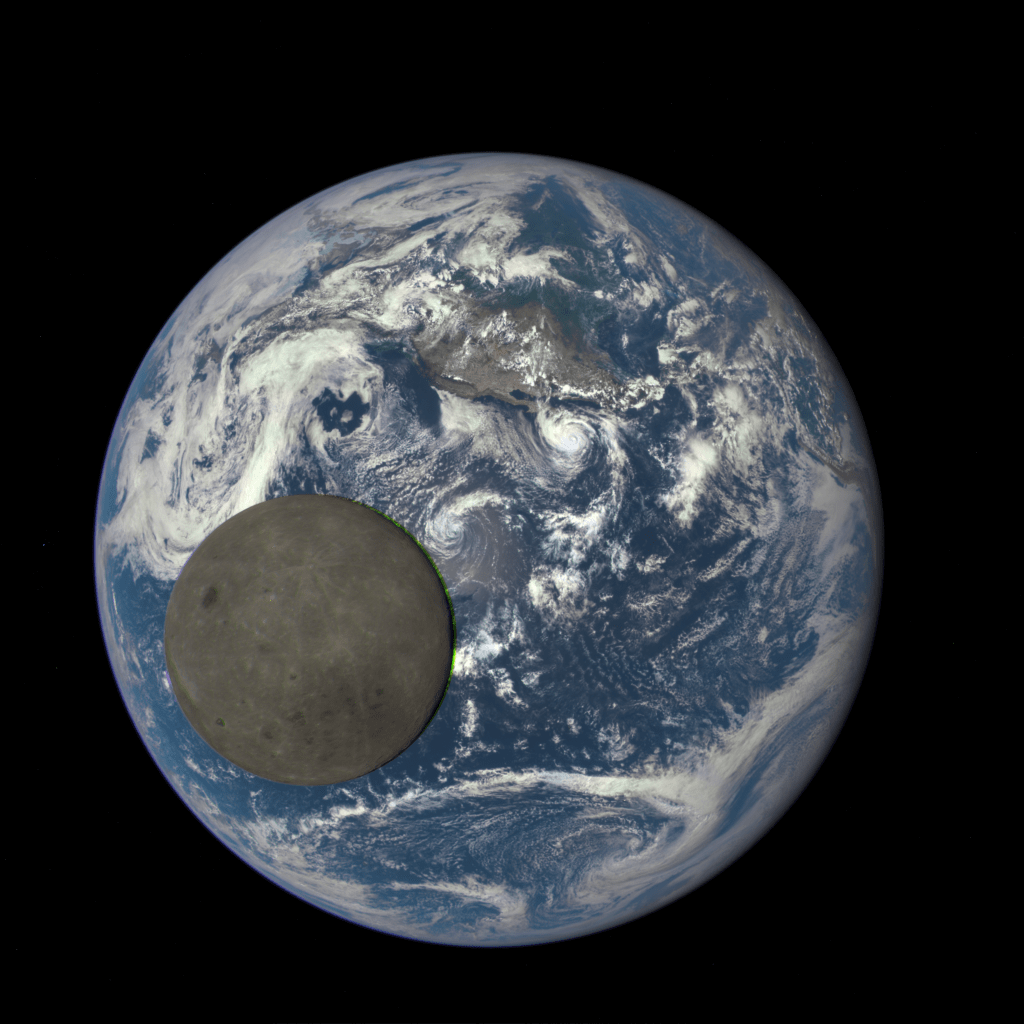
And what about the Moon? The Earth’s Moon has a stabilizing effect on Earth’s climate, by moderating Earth’s wobble on its axis. The Moon also has a huge effect on tides, and that may have jump-started or accelerated life on Earth. In the future, will we talk not about Earth-like planets, but about Earth-Sun like arrangements? Or Earth-Sun-Moon-like arrangements?
Of course, we’re nowhere near being able to detect exomoons. Not yet. But one day we will be.
Then we’ll have to re-think our language and categorizations yet again.
More:
- Press Release: A faint resemblance of Sun and Earth
- Research Paper: Transit least-squares survey. III. A 1.9 R? transit candidate in the habitable zone of Kepler-160 and a nontransiting planet characterized by transit-timing variations
- Universe Today: Now that TESS is Operational, Astronomers Estimate it’ll Find 14,000 Planets. 10 Could Be Earthlike Worlds in a Sunlike Star’s Habitable Zone

